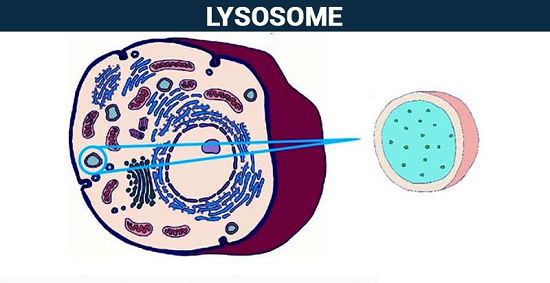Updated By: LatestGKGS Desk
Biology: Introduction of Lysosomes, Size and Function in human cell

Biology: Introduction of Lysosomes, Size, and Function in the human cell also known digestive bags of the cell.
Lysosomes are special vesicles within cells that digest large molecules through the use of hydrolytic enzymes. They are only found in animal cells; a human cell contains around 300 of them. Not only do they digest large molecules, but they are also responsible for breaks and getting rid of waste products of the cell.
Lysosomes digest many complex molecules such as carbohydrates, lipids, proteins, and nucleic acids, which the cell then recycles for other uses. The pH of lysosomes is acidic (approximately pH 5) because their hydrolytic enzymes function best at this pH rather than neutral pH of the remaining parts of the cell.
Hydrolytic enzymes typically break down large molecules through hydrolysis. During the process of hydrolysis, a molecule of water is added to a substance, causing it to leave. Lysosomes contain powerful digestive enzymes that are able to break all organic substance, so they are called digestive bags of the cell.
Lysosomes are usually 0.1-0.5µm in size, although they can reach 1.2µm. They have a simple structure; they are spherically made of a lipid bilayer that attaches to the fluid which contains various types of hydrolytic enzymes.


